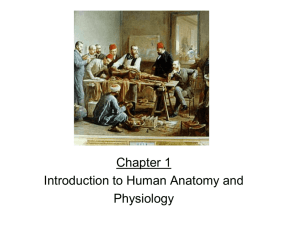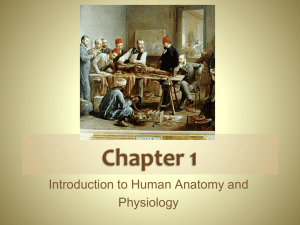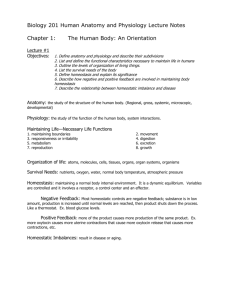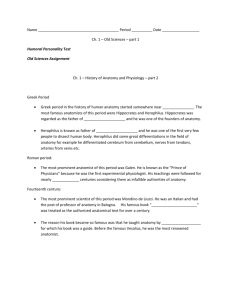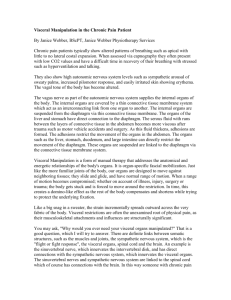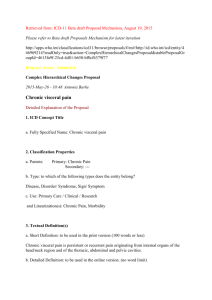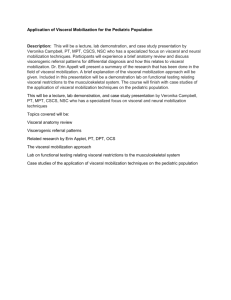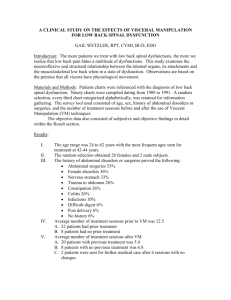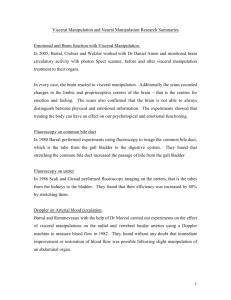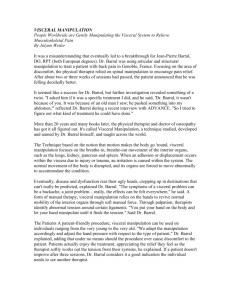Intro to A & P Notes
advertisement
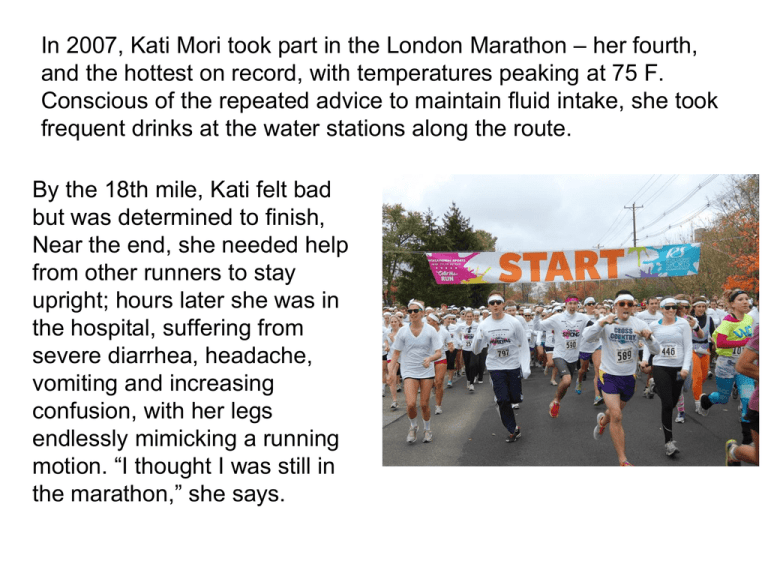
In 2007, Kati Mori took part in the London Marathon – her fourth, and the hottest on record, with temperatures peaking at 75 F. Conscious of the repeated advice to maintain fluid intake, she took frequent drinks at the water stations along the route. By the 18th mile, Kati felt bad but was determined to finish, Near the end, she needed help from other runners to stay upright; hours later she was in the hospital, suffering from severe diarrhea, headache, vomiting and increasing confusion, with her legs endlessly mimicking a running motion. “I thought I was still in the marathon,” she says. Introduction to Human Anatomy and Physiology Definitions Anatomy – the structure of body parts (also called Morphology) Physiology – the function of the body parts, what they do and how they do it Characteristics of Living Things 1. Movement - self initiated change in position, motion of internal parts 2. Responsiveness (irritability) - Ability to sense changes within, or around the organism and react to them 3. Growth - increase in body size 4. Reproduction - Parents produce offspring / producing new individuals 5. Respiration - Obtaining oxygen (O2), using it to release energy from food substances, and getting rid of wastes 6. Digestion - Chemically changing (breaking down) food substances, and getting rid of wastes 7. Absorption - Passage of Digested products (food substances) through membranes and into body fluids 8. Circulation - Movement of substances throughout the body 9. Assimilation - Changing absorbed substances into chemically different substances 10. Excretion - Removal of wastes ●I am walking to Mcdonalds (movement) ●I stop at the traffic light (response) ●My body is growing (growth) ●I am breathing air (respiration) ●I get a hamburger and eat it (digestion) ●My body absorbs the hamburger (absorption) ●The hamburger circulates in my body (circulation) ●The hamburger is changed to things my body needs (assimilation) ●Eventually, I go to the bathroom (excretion) ●Someday I may reproduce (reproduction) Other Characteristics Metabolism = all the physical and chemical changes Bodily needs = food, oxygen, water, heat (How long can you live without these?) Homeostasis = tendency of the body to maintain a stable, balanced, internal environment. “Sameness” ●Axial Portion - head, neck, trunk ●Appendicular Portion - arms & legs 1. Several body cavities 2. Layers of membranes within cavities 3. Variety of organs and organ systems within cavities (VISCERA = internal organs. "Visceral organs") Homework: Organ Systems Concept Map Popular in horror movies and games Body Cavities Dorsal = back side Ventral = front side Thoracic = chest (heart, trachea, lungs..) Abdomen = stomach area (spleen, intestines) Pelvic = lower abdomen (bladder, reproductive organs) DIAPHRAGM: Separates the thoracic and pelvic region It's easier to visualize the body cavities on pictures see Body Cavity Label | Label 2 Label the body cavities (use your book) When Kati arrived at the hospital and doctors began to collect information, they discovered that she weighed 128 lbs. Oddly, when she checked in to the race, she weighed 126 lbs. The doctor suggests that Kati might have “hyponatremia.” What do you think that is? MEMBRANES Serous Membrane - two layers, covers organs Outer layer = parietal Inner layer = visceral (lines the organs) Serous fluid – lubricating fluid Other Membranes Pleura = lungs Pericardium = heart Peritoneum = organs (abdominopelvic region) Visceral Pleura Parietal Pleura Visceral and Parietal always mean the same thing. LUNGS Visceral Pericardium Parietal Pericardium Visceral PeritoneumParietal Peritoneum Visceral points toward the guts Parietal points toward the outside HEART INTESTINES Anatomical Terminology Anatomical Position = standing erect, face forward, arms at side, palms facing forward *Study and learn the following terms* 1. Superior 2. Inferior 3. Anterior 4. Posterior 5. Medial 6. Lateral 7. Proximal 8. Distal 9. Superficial 10. Deep Homework: Fill out the chart on the body regions In cases of water intoxication, it is extreme hyponatremia that can ultimately cause coma and death. If it's caught early, treatment with IV fluids containing electrolytes can lead to a complete recovery; but untreated, hyponatremia is fatal. The doctor orders a drug that increases urination. Kati is able to clear the extra water from her body and recovers. How does Kati’s story relate to HOMEOSTASIS? ●There are tons of careers, some of them only require a short term of training. What are your goals? ●See Explore Health Careers ●Homework: Medical and Applied Science
